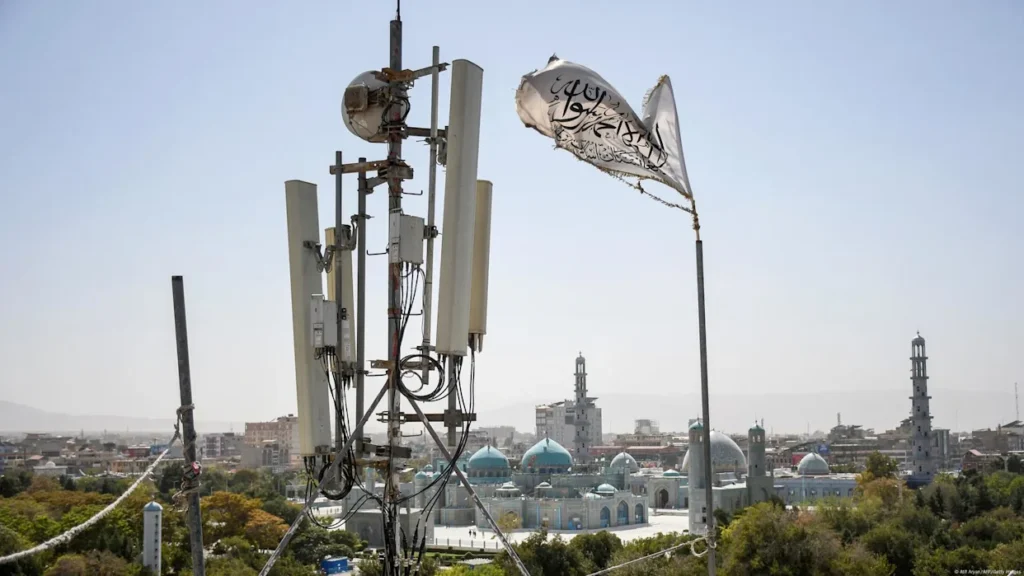“Silence is golden,” the old saying goes, but in Afghanistan today, silence is heavy, suffocating, and imposed. On a September morning in Kabul, Noor, a 21-year-old student, reached for her phone to download her lecture slides. The wheel spun and spun, but nothing came through. Across the country, families, traders, doctors, and journalists faced the same bitter truth: the internet had been shut off.
What began as whispers of trouble in mid-September turned into a full-blown blackout by the month’s end. Fibre-optic lines were cut, Wi-Fi was banned, and mobile internet was throttled until connectivity sank to just 14% of normal levels, sometimes even closer to zero. The Taliban had flipped the switch, and 40 million Afghans were left in the dark.
A Habit of Control
This is not the first time Afghanistan has been dragged back into silence. Since regaining power in 2021, the Taliban have turned internet shutdowns into a well-worn tool of governance. Their official excuse? Morality. Leaders claim that fibre-optic and Wi-Fi networks allow the flood of “immoral” Western values, from women’s voices on social media to videos they deem corrupt. But the truth runs deeper: the web is also a stage for dissent, protests, and independent reporting. By severing the connection, the Taliban silences opposition and prevents the world from peering inside.
How many are left in the Cold?
Before the blackout, Afghanistan had approximately 13.2 million internet users, accounting for around 30% of the population. Now, nearly all of them are cut off. Provinces such as Balkh, Badakhshan, Kunduz, Takhar, Baghlan, Nangarhar, Herat, Kandahar, Uruzgan, and Zabul have all been disconnected. In practice, this means millions of students, teachers, patients, small businesses, and government workers are stranded mid-stream. It is, as Afghans say, “like breaking a man’s oar while he is still in the river.”
Sectors Crippled by the Blackout
The internet is the bloodstream of modern life, and when it is cut, the body of the nation weakens. Education suffers first. Afghan students, particularly women already barred from classrooms, lose their last teacher. Online academies, coding lessons, and foreign university programs that had become lifelines now flicker out. Noor and thousands like her cannot access lessons, submit assignments, or message professors. The blackout has turned digital classrooms into empty halls.
Health is another casualty. Doctors in provincial hospitals had been using WhatsApp and email to consult with specialists abroad. Telemedicine, a growing tool in rural areas, collapses. Prescriptions are delayed, diagnoses are missed, and health alerts vanish. For a patient waiting on advice, the silence can mean life or death. “A stitch in time saves nine,” but without the internet, those stitches never come.
The economy, already hanging by a thread, is throttled further. Afghanistan’s fragile banking system leans heavily on mobile money platforms like M-Paisa. Transfers freeze, salaries go unpaid, and families relying on remittances from relatives abroad cannot receive their lifeline. Traders who sell carpets, handicrafts, or food through Instagram and WhatsApp lose orders overnight. A merchant in Mazar-e-Sharif sighed, “The market has gone blind.”
Governance and aid delivery also stumble. Government offices, already plagued by inefficiency, lose their ability to communicate between provinces. Aid agencies that rely on digital reporting and satellite mapping are cut off mid-operation. In Nangarhar, humanitarian deliveries sat idle in warehouses because coordinators could not reach drivers. And in the media, journalists go silent, unable to share the truth from their provinces. When the internet dies, bureaucracy, charity, and free speech die with it.
The Human Face of Silence
Numbers tell part of the story, but the real tragedy lies in human lives. Farida, a widow in Herat, depends on remittances from her sons in Turkey. With the internet down, she cannot withdraw cash to buy bread. Ahmad, a carpet seller, used to ship rugs abroad through online orders. His shop now gathers dust. For families separated across borders, video calls have gone mute. The blackout is not just wires cut; it is hearts cut off from one another.
Afghanistan’s Standing in the World
Internationally, this blackout paints a grim picture. Investors see a country where businesses can be unplugged at will. Aid donors lose faith in transparency. Human rights groups call it another nail in the coffin of free speech. Afghanistan risks becoming not just landlocked, but “mind-locked,” isolated from the very networks that knit the world together. As one diplomat put it, “If Afghanistan shuts itself off from the web, it shuts itself off from the world.” For a country already struggling with sanctions, poverty, and climate crises, this isolation is like salt rubbed into an open wound.
Conclusion: When Silence Screams
The Afghan proverb says, “A house without light is like a body without soul.” Today, Afghanistan is a house plunged into digital darkness. The Taliban’s internet blockade is not just about curbing websites; it strangles education, health, trade, and hope. Yet, even in the blackout, Afghans find ways to adapt. Some tap into satellite links, others build underground networks. Their resilience is proof that silence, however heavy, cannot last forever. But until the light returns, Afghanistan remains a nation forced into quiet, its voice muted, its future stalled, its people left waiting for the line to reconnect.
Afghanistan faces another internet blockade, cutting millions off from education, trade, and health while testing the nation’s resilience once again.
Also Read: Afghanistan Committed to Friendly Ties with Pakistan, States Zabihullah Mujahid



